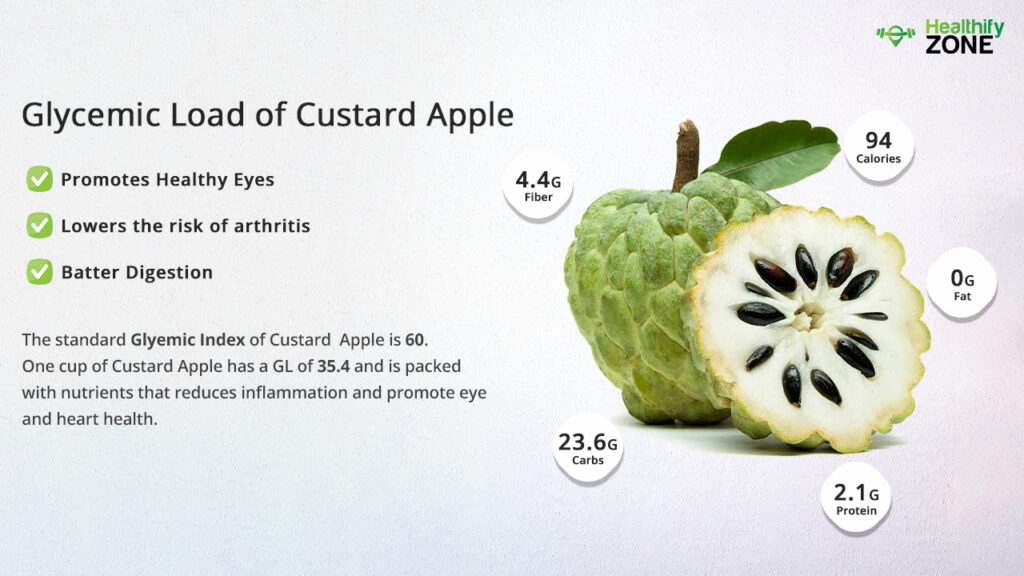Sitaphal has a glycemic index of 54. This places it in the low glycemic range. It has a glycemic load is 10, nevertheless. It follows that if you have diabetes, you should consume this fruit in moderation. A low-calorie, sweet, fleshy fruit with a lot of fiber is the custard apple. Because only one calorie is contained in every gram of custard apple, it is a fantastic complement to weight loss plans. It also goes by the names Sugar apple, Sweet sop, Sitaphal, or Sarifa. It contains a lot of vitamin C and can help keep blood pressure in check.
It is regarded as a delicacy in various parts of the world due to its extremely sweet and delicate flesh. Sugar, phosphorus, iron, protein, calcium, and sugar are the main forms of carbs found in custard apple fruit. For those who are lactose intolerant, it can also be used as a substitute for dairy products.
The fruit might be round, irregular, virtually oblate, symmetric heart-shaped, asymmetrical, or irregular with a shallow or deep depression at the base. In addition to being sweet and fleshy, the custard apple fruit’s pulp also has a fragrance and a mildly acidic flavor.

Is Sitafal Safe for Diabetes?
Eating this fruit should be in moderation if you have diabetes.
Is Sitafal Suitable for Weight Loss?
Custard apple fruit is recommended in diets for losing weight. Custard apples are an excellent complement to a balanced diet designed for weight loss because they have very few calories and no cholesterol. Custard apples have a glycemic load of 10, making them crucial for diabetics. Custard apples don’t cause an increase in blood sugar levels.
100 grams of raw custard apples also include 2.4 g of fiber. As a result, it helps maintain regular bowel movements and curbs overeating. Additionally, studies have demonstrated that it lowers cholesterol and controls blood sugar.
Custard apples are a crucial component of a healthy diet since they are low in fat, saturated fat, salt, and cholesterol. They are also a great source of fiber, potassium, copper, manganese, and vitamins B1, B2, magnesium, zinc, and iron.
What is the Best time to Consume Sitafal?
Fruit provides excellent nourishment for your body 2-4 times per day. Personal experience has shown that eating habits at night are beneficial. Your stomach is still in the process of breaking down the meal you consumed. It’s not terrible, but it affects your ability to sleep.
The Bottom Line: The Glycemic Index of Sitafal is 54
Potassium in Sitaphal makes the fruit ideal for people with high blood pressure. Sodium’s impact is countered by potassium. People with high blood pressure should avoid areas with high salt levels. Sitaphal can reduce acidity and aid in ulcer healing. The fruit has vitamins that might give you a skin tone that is even. It can enhance the condition of the brain and eyes. Sitaphal’s iron content makes the fruit advantageous for boosting haemoglobin. Bioactive compounds found in sitaphal exhibit anti-obeseogenic, anti-diabetic, and anti-cancer effects.